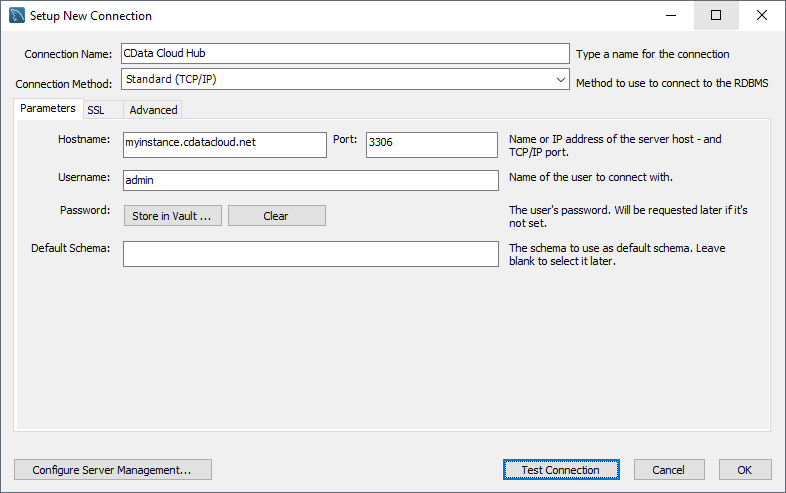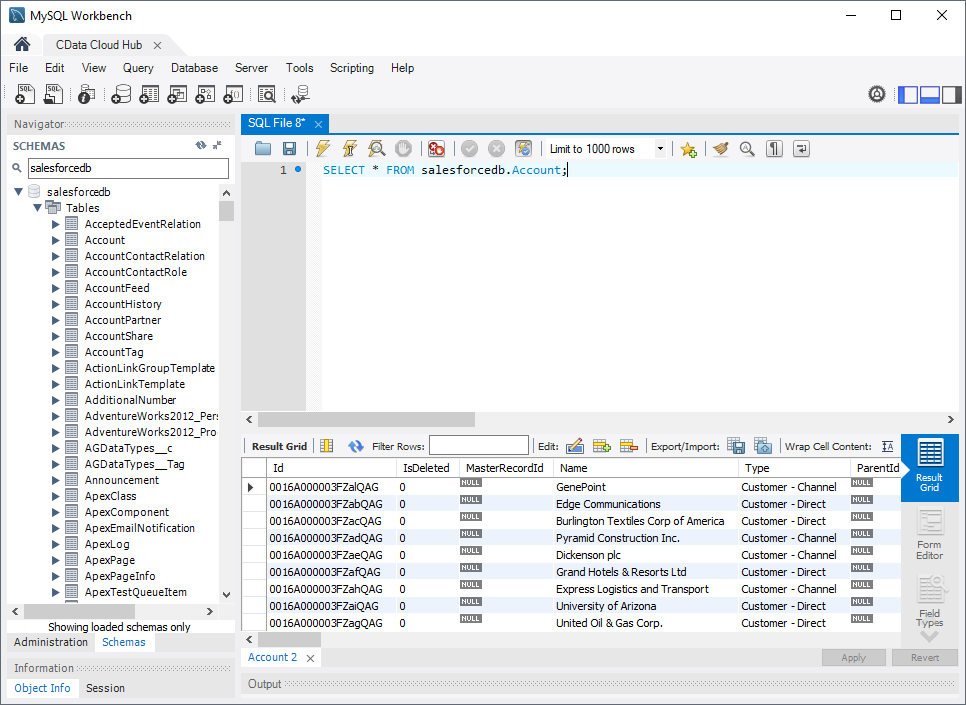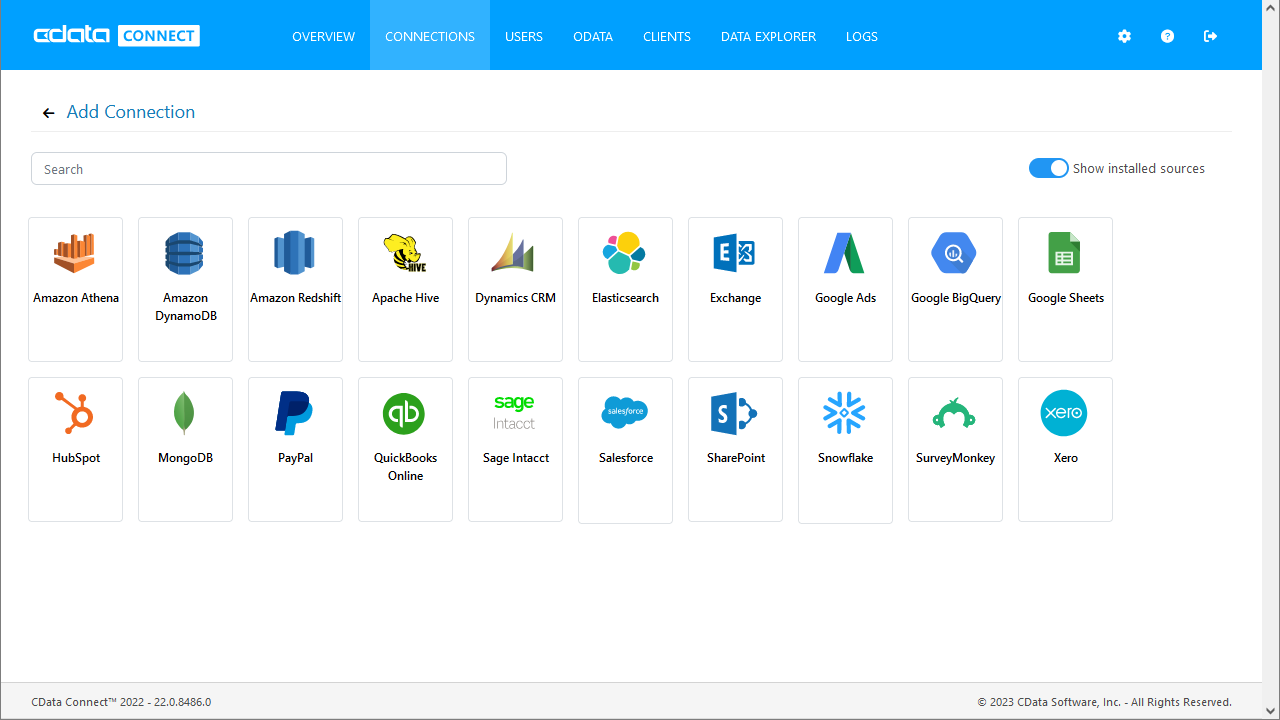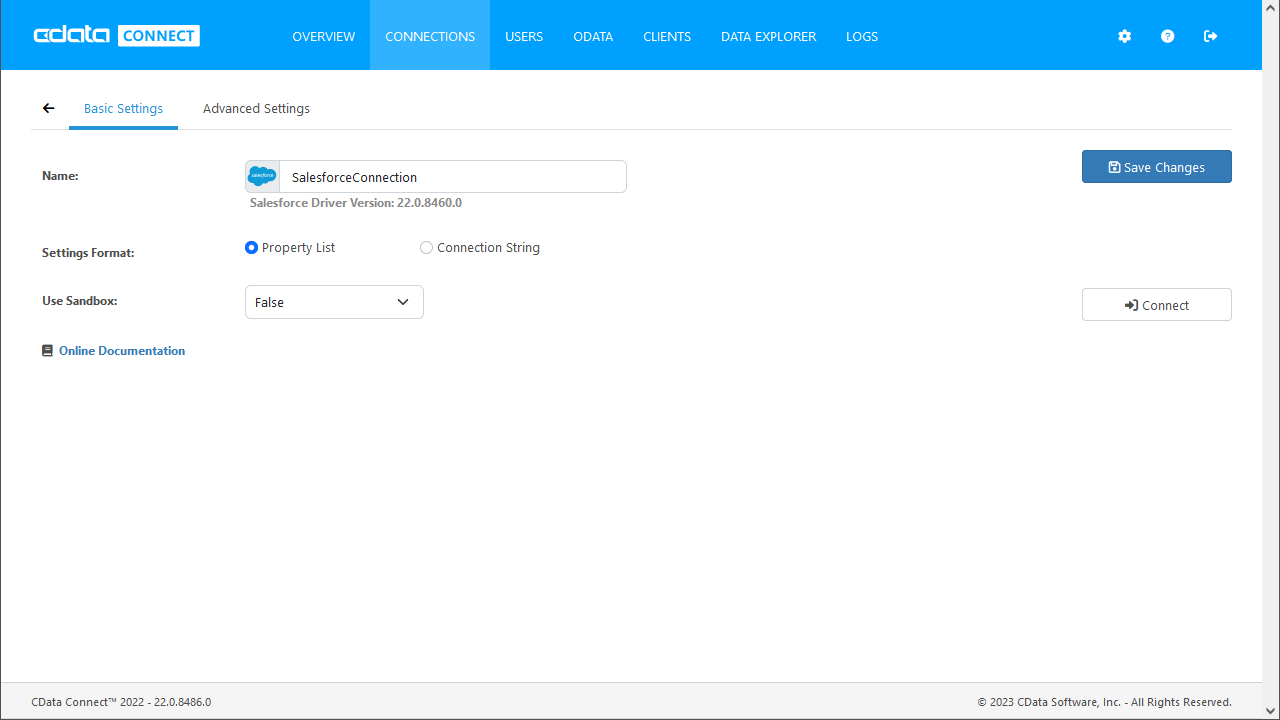Discover how a bimodal integration strategy can address the major data management challenges facing your organization today.
Get the Report →Query Databricks Data in MySQL Workbench
Create a virtual MySQL database for Databricks data in CData Connect (or Connect Server) and work with live Databricks data in MySQL Workbench.
MySQL Workbench allows users to administer MySQL environments and gain better visibility into databases. When paired with CData Connect (on-premise or Connect Server), you get live access to Databricks data as if it were a MySQL database. This article shows how to create a virtual database for Databricks in Connect and work with live Databricks data in MySQL Workbench.
Create a Virtual MySQL Database for Databricks Data
CData Connect uses a straightforward, point-and-click interface to connect to data sources and generate APIs.
- Login to Connect and click Connections.
![Adding a connection]()
- Select "Databricks" from Available Data Sources.
-
Enter the necessary authentication properties to connect to Databricks.
To connect to a Databricks cluster, set the properties as described below.
Note: The needed values can be found in your Databricks instance by navigating to Clusters, and selecting the desired cluster, and selecting the JDBC/ODBC tab under Advanced Options.
- Server: Set to the Server Hostname of your Databricks cluster.
- HTTPPath: Set to the HTTP Path of your Databricks cluster.
- Token: Set to your personal access token (this value can be obtained by navigating to the User Settings page of your Databricks instance and selecting the Access Tokens tab).
![Configuring a connection (SQL Server is shown).]()
- Click Save Changes
- Click Privileges -> Add and add the new user (or an existing user) with the appropriate permissions.
With the virtual database created, you are ready to connect to Databricks from MySQL Workbench.
Query Databricks from MySQL Workbench
The steps below outline connecting to the virtual Databricks database in Connect from MySQL Workbench and issuing basic queries to work with live Databricks data.
Connect to Databricks through Connect
- In MySQL Workbench, click to add a new MySQL connection.
- Name the connection (CData Connect).
- Set the Hostname, Port, and Username parameters to connect to the SQL Gateway.
- Click Store in Vault to set and store the password.
- Click Test Connection to ensure the connection is configured properly and click OK.

Query Databricks Data
- Open the connection you just created (CData Connect).
- Click File -> New Query Tab.
- Write a SQL query to retrieve Databricks data, like SELECT * FROM databricksdb.Customers;

With access to live Databricks data from MySQL Workbench, you can easily query and update Databricks, just like you would a MySQL database. Request a demo of the CData Connect and start working with Databricks just like a MySQL database today.








